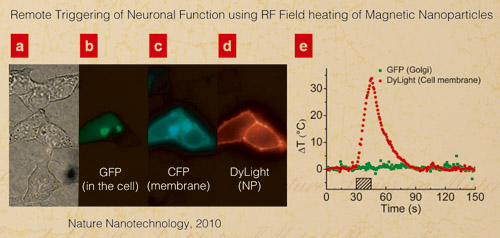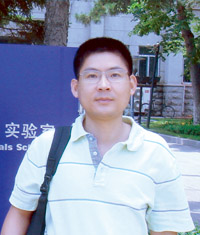|
|
| Dr. Hao Zeng榮獲2011年李薰青年學(xué)者講座獎 |
| |
| 2011-07-19 | 文章來(lái)源:李薰獎辦公室 【大 中 小】【打印】【關(guān)閉】 |
Topic: Magnetic Nanostructures – Fabrication, Applications and Future Prospects
Hao Zeng
Department of Physics, University at Buffalo, the State University of New York
e-mail: haozeng@buffalo.edu
Recent advances in colloidal chemical synthesis and nanofabrication have led to the development of magnetic nanostructures with tunable dimension, morphology and chemical composition. These nanostructures can not only serve as model systems for fundamental studies, but their interesting physical properties associated with their nanoscale dimensions can be harnessed for various applications. In this talk, I will discuss three topics: 1. Self-organized magnetic nanoarrays. The individual element in the array is a single domain particle, where it demonstrates distinctively different magnetic properties from those of bulk counterparts. These ordered nanoarrays are model systems for high density data storage media; 2. diluted magnetic semiconductor (DMS) quantum dots (QD). A central issue in semiconductor spintronics is the interplay between the carriers and dopants to achieve magnetic order and carrier spin polarization. To this end, DMS QDs serve as a model system to study carrier-dopant exchange interactions. We use both continuous wave and time-resolved, circularly polarized photoluminescence to probe such interactions. 3. Ferrite nanoparticles (NPs) for biological applications. We show an approach based on RF magnetic-field heating of NPs to remotely activate temperature-sensitive calcium channels in cells. NPs were targeted to specific proteins on the plasma membrane of cells expressing TRPV1, and heated by a RF magnetic field. Using fluorophores as molecular thermometers, we show that the induced temperature increase is highly localized. Thermal activation of the channels triggers action potentials in neurons. The future prospects of magnetic nanostructures will be briefly touched.

Brief Bio
 Hao Zeng received his B.S. degree from Nanjing University and Ph.D. from University of Nebraska, both in physics. He was a postdoc fellow at IBM Thomas J Watson Research Center between 2001 and 2004. He joined the Physics Department at the University at Buffalo, the State University of New York as an Assistant Professor in 2004. In September 2009 he was promoted to tenured Associate Professor. He is the recipient of an IBM Research Division Award, National Science Foundation CAREER award and UB Exceptional Scholar Award. Dr. Zeng has published more than 60 papers in Journals including Nature, Nature Nanotechnology, Nano Letters, Journal of the American Chemical Society and Advanced Materials. These papers have been cited for more than 4,500 times, with 12 papers cited for more than 100 times. Dr. Zeng’s main research area is condensed matter and materials physics. His present research interests focus on nanoscale magnetism and spintronics, materials for energy applications and biomagnetics. Hao Zeng received his B.S. degree from Nanjing University and Ph.D. from University of Nebraska, both in physics. He was a postdoc fellow at IBM Thomas J Watson Research Center between 2001 and 2004. He joined the Physics Department at the University at Buffalo, the State University of New York as an Assistant Professor in 2004. In September 2009 he was promoted to tenured Associate Professor. He is the recipient of an IBM Research Division Award, National Science Foundation CAREER award and UB Exceptional Scholar Award. Dr. Zeng has published more than 60 papers in Journals including Nature, Nature Nanotechnology, Nano Letters, Journal of the American Chemical Society and Advanced Materials. These papers have been cited for more than 4,500 times, with 12 papers cited for more than 100 times. Dr. Zeng’s main research area is condensed matter and materials physics. His present research interests focus on nanoscale magnetism and spintronics, materials for energy applications and biomagnetics.
CV-Hao Zeng |
|
|
|
 文檔附件 文檔附件 |
 相關(guān)信息 相關(guān)信息 |
|
|



